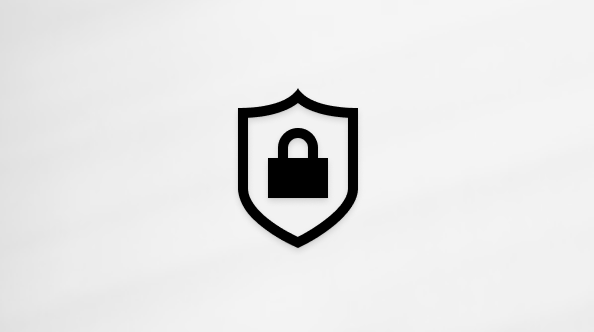With Windows printers installed on a Windows device can be shared with other Windows devices on the network. To share a printer between Windows devices, the following steps need to take place:
-
Connect the printer to the primary Windows device, either wirelessly or by using a USB cable.
-
Make sure the primary Windows device is turned on and connected to the network.
-
Turn on the printer.
-
Set up sharing settings for the printer.
-
Connect the shared printer to other secondary Windows devices.
Important: Before attempting to share a printer on the network, make sure the printer is installed and working on the primary Windows device.
In order to properly share a printer across a trusted network, the network needs to be set as Private. To verify that the current trusted network is set to Private, or to set it to Private, follow these steps:
Warning: Make sure the network being set as Private in the following steps is a trusted network.
-
Right-click on the Start menu and then select Settings > Network & Internet . Or Select the following Network & internet shortcut:Open Network & internet
-
In the Network & internet window, select either Wi-Fi or Ethernet .
-
Under Network profile type, select Private network.
The settings to share devices, including printers, are normally turned on by default for Private networks. To verify that sharing settings are turned on, or to turn them on if they're turned off, follow these steps:
-
Right-click on the Start menu and then select Settings > Network & internet . Or Select the following Network & internet shortcut:Open Network & internet
-
In the Network & internet window, select Advanced network settings.
-
In the Network and internet > Advanced network settings window, select Advanced sharing settings.
-
In the Network and internet > Advanced network settings > Advanced sharing settings window, expand the Private networks section, and then make sure both Network discovery and File and printer sharing are switched On.
Note: If the User Account Control window appears, enter a user name and password of an account that has administrator privileges on the Windows device, and then select the Yes button.
The name or IP address of the primary Windows device needs to be determined before the shared printer can be installed on other Windows devices.
Determine the name of the primary Windows device:
-
On the Windows device where the printer is directly connected, right-click on the Start menu and then select Settings > System > About . Or Select the following System > About shortcut:Open System > About
-
In the System > About window, the name of the primary Windows device can be found under Device specifications and next to Device name. Make a note of this name for use when setting up the shared printer on other Windows devices.
Determine the IP address of the primary Windows device:
-
On the Windows device where the printer is directly connected, right-click on the Start menu and then select Settings > Network & internet . Or Select the following Network & internet shortcut:Open Network & internet
-
In the Network & internet window, select either Wi-Fi or Ethernet .
-
The IP address of the primary Windows device can be found next to IPv4 address:. Make a note of this IP address for use when setting up the shared printer on other Windows devices.
Support for Windows 10 will end in October 2025
After October 14, 2025, Microsoft will no longer provide free software updates from Windows Update, technical assistance, or security fixes for Windows 10. Your PC will still work, but we recommend moving to Windows 11.
Important: Before attempting to share a printer on the network, make sure the printer is installed and working on the primary Windows device.
In order to properly share a printer across a trusted network, the network needs to be set as Private. To verify that the current trusted network is set to Private, or to set it to Private, follow these steps:
Warning: Make sure the network being set as Private in the following steps is a trusted network.
-
Right-click on the Start menu and then select Settings > Network & Internet . Or Select the following Network & Internet shortcut:Open Network & Internet
-
In the Status window, under either Wi-Fi or Ethernet , select the Properties button.
-
Under Network profile, select Private.
The settings to share devices, including printers, are normally turned on by default for Private networks. To verify that sharing settings are turned on, or to turn them on if they're turned off, follow these steps:
-
Right-click on the Start menu and then select Settings > Network & Internet . Or Select the following Network & Internet shortcut:Open Network & Internet
-
In the Status window, under Advanced network settings, select Network and Sharing Center.
-
In the Network and Sharing Center window that opens, on the left-hand side, select Change advanced sharing settings.
-
In the Advanced sharing settings window that opens:
-
Expand the Private section.
-
Under Network discovery, select Turn on network discovery.
-
Under File and printer sharing, select Turn on file and printer sharing.
-
Select the Save changes button.
Note: If the User Account Control window appears, enter a user name and password of an account that has administrator privileges on the Windows device, and then select the Yes button.
-
The name or IP address of the primary Windows device needs to be determined before the shared printer can be installed on other Windows devices.
Determine the name of the primary Windows device:
-
On the Windows device where the printer is directly connected, right-click on the Start menu and then select Settings > System > About . Or Select the following About shortcut:Open About
-
In the About window, the name of the primary Windows device can be found under Device specifications and next to Device name. Make a note of this name for use when setting up the shared printer on other Windows devices.
Determine the IP address of the primary Windows device:
-
On the Windows device where the printer is directly connected, right-click on the Start menu and then select Settings > Network & Internet . Or Select the following Network & Internet shortcut:Open Network & Internet
-
In the Status window, under either Wi-Fi or Ethernet , select the Properties button.
-
The IP address of the primary Windows device can be found under Properties and next to IPv4 address:. Make a note of this IP address for use when setting up the shared printer on other Windows devices.












